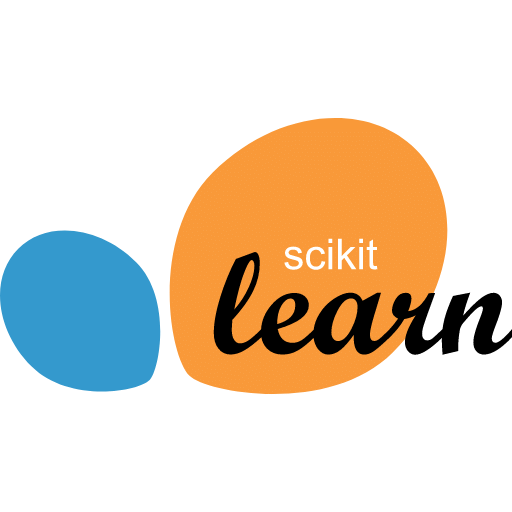- Courses
- Data Science & Machine Learning
Data Science & Machine Learning
About This Course
Data Science and Machine Learning involve analyzing data to derive insights and make predictions. It uses statistical methods, algorithms, and programming to understand complex data patterns, automate decision-making, and drive innovation.
- 6 Months Course
- 2 Months Internship
- Certificate
Tools and Programs You Will Learn

Key Points
- Expert Instructors to Learn from industry leading professionals.
- Flexible Learning to Study anytime anywhere at your pace
- Interactive Courses to Engaging materials for the best experience
- Affordable Excellence and High-quality education at a reasonable cost
Scope
Data Analyst | Business Intelligence Analyst | Data Engineer | Data Scientist | Machine Learning Engineer | Data Visualization Specialist | Big Data Analyst | Data Mining Specialist | Quantitative Analyst | Predictive Analytics Specialist
Curriculum
The Rootsys International has been exclusively founded to groom young leaders in the art of savoir-vivre or social etiquette, Our curriculum and programmes for complete personality enhancement are designed to be a life changing experience.
MODULE 1 Foundations of Data Science
– Introduction to data science and its applications
– Data lifecycle and key concepts
– Ethics and best practices in data science
MODULE 2 Fundamentals of Machine Learning
– Introduction to machine learning algorithms and models.
– Supervised, unsupervised, and reinforcement learning.
– Model evaluation and validation techniques.
MODULE 3 Jupyter Notebook and Google Colab
– Introduction to Jupyter Notebook: Understanding the interactive
computing environment for data science and machine learning.
– Exploring Jupyter Notebook interface and features: Markdown cells, code cells, and keyboard shortcuts.
– Data exploration and visualization with Jupyter Notebook: Using libraries like Matplotlib and Seaborn.
– Collaboration and sharing with Jupyter Notebook: Exporting notebooks, version control.
– Introduction to Google Colab: Overview of the cloud-based Jupyter Notebook environment provided by Google.
– Google Colab for collaborative projects: Real-time collaboration, sharing
notebooks, and accessing resources like GPUs and TPUs for training models
MODULE 4 Mastering Python for Data Science
– Python fundamentals: Variables, data types, operators, and control structures.
– Functions and modules: Defining, calling, and organizing code into reusable units
– Object-oriented programming (OOP) in Python: Classes, objects, inheritance,and polymorphism.
– File handling and input/output operations: Reading from and writing to files.
– Error handling and exceptions: Handling runtime errors gracefully.
– Advanced Python topics: Decorators, generators, context managers, and comprehension techniques.
MODULE 5 Building a Foundation in Statistics and Mathematics (Basics)
– Fundamentals of statistics: descriptive statistics, probability distributions.
– Linear algebra essentials: vectors, matrices, matrix operations.
– Calculus basics: derivatives, integrals.
MODULE 6 Version Control with Git
– Introduction to Git: Version Control System.
– Basic Git Commands.
– Branching and Merging.
– Collaboration with Git.
MODULE 7 Practing Ai Tools
– Practicing Command Prompt to seek codes and logics.
– Using the codes and logics in the appropriate circumstanses.
AI tools we use common:
ChatGPT, Gemini, Copilot, Blackbox,Phind
MODULE 8 Data Analysis with NumPy and Pandas
– Introduction to NumPy: Arrays, indexing, and operations.
– Data Manipulation with Pandas: Series, DataFrames, and Data Wrangling.
– Data Cleaning and Preprocessing Techniques.
– Working with Missing Data and Outliers.
MODULE 9 Data Visualization with Matplotlib and Seaborn
– Introduction to Data Visualization: Importance and Principles.
– Visualization with Matplotlib: Creating plots, charts, and graphs.
– Advanced Visualization with Seaborn: Styling and customization.
MODULE 10 Understanding Databases
– Introduction to Relational Databases.
– SQL fundamentals for data retrieval and manipulation.
– Data access with Python using SQLAlchemy.
– NoSQL databases: Overview of document, key-value, and columnar
databases.
MODULE 11 Data Analysis With Python and Pandas
– Advanced data manipulation and analysis with Pandas.
– Handling missing data and outliers.
– Time series analysis and manipulation.
MODULE 12 Machine Learning with Scikit-learn
– Introduction to Scikit-learn and its Features.
– Supervised Learning Algorithms: Classification, Regression.
– Unsupervised Learning Algorithms: Clustering, Dimensionality Reduction
MODULE 13 Supervised Learning
– Introduction to supervised learning: Concepts, algorithms, and applications.
– Classification algorithms: Logistic regression, decision trees, and ensemble methods (random forests, gradient boosting).
– Model evaluation metrics: Accuracy, precision, recall, F1 score, ROC curves, and AUC.
– Feature engineering and selection: Dimensionality reduction, feature scaling, and feature importance.
– Case studies and projects applying supervised learning algorithms to real-world datasets.
MODULE 14 Unsupervised Learning, Recommenders, Reinforcement Learning
– Unsupervised learning algorithms: K-means, hierarchical clustering.
– Introduction to recommendation systems and reinforcement learning concepts.
– Case studies and projects involving unsupervised learning tasks and recommendation systems.
– Reinforcement learning applications in games, robotics, and finance.
MODULE 15 Building RESTful APIs with Flask
– Introduction to Flask Web Framework.
– Building RESTful APIs for serving machine learning models.
– Introduction to Flask: Setting up a Flask project, routing, and request handling.
– RESTful architecture principles: HTTP methods, status codes, and resource endpoints.
– Building API endpoints: Handling requests, processing data, and returning responses.
– API documentation: Generating documentation with tools like Swagger and Postman.
MODULE 16 Introduction to Deep Learning
– Basics of neural networks.
– Fundamentals of Deep Learning: Neural Networks, Activation Functions.
– Convolutional Neural Networks (CNNs) and Recurrent Neural Networks (RNNs).
– Convolutional Neural Networks (CNNs) for image classification.
MODULE 17 Introduction to Deep Learning
– Neural Network Architectures: Feedforward, Recurrent, and Convolutional Networks.
– Training Neural Networks: Backpropagation, Optimization Techniques.
MODULE 18 Deep Learning with TensorFlow and Keras
– Building and Training Neural Networks with TensorFlowز
– High-Level Deep Learning APIs with Keras.
MODULE 19 End-to-End Project
– Implementation and Development: Building the project infrastructure, integrating Langchain and LLM functionalities, and developing the necessary components to achieve the project goals.
– Testing, Evaluation, and Deployment: Conducting thorough testing, evaluating model performance, and deploying the project to the production environment for real-world usage.